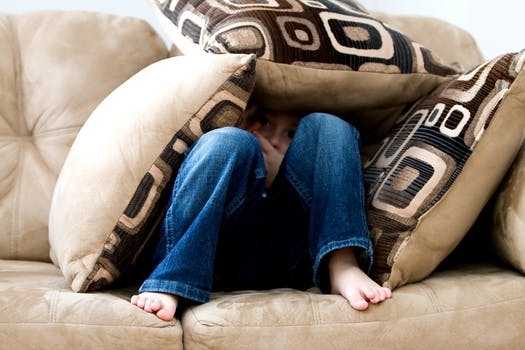
As the mother of a child with anxiety, I know all too well how difficult and heartbreaking it is when your child is crippled with irrational fear. I am a natural worrier and unfortunately, I’ve passed this trait on to my oldest daughter. She has borderline separation anxiety disorder, which results in emotional breakdowns, stomach aches, lack of socialization and difficulty in school, just to name a few. And though each day and each new experience is a struggle, understanding the triggers and the coping skills and tools that help her most have made a world of difference. Like with most things, every child is different. What works for us may not work for you. But if you’re feeling lost and unsure where to start, here are a few simple fixes you can start doing right now to help calm your child’s nerves and help them break down their worry walls.
Build a Support Team
Where does your child spend most of their time? Either at home or at school. It’s important that the tactics you’re using at home are mirrored at school or in any type of daycare or aftercare setting. This isn’t always easy or possible 100% of the time but there are some pretty simple ways to achieve this cohesiveness.
Communication is key. Be in constant communication with your child’s teachers and the school’s guidance counselor. These people are there to help your child adjust to school and many children’s anxiety is tied to school. Whether it’s handling peer pressure or academic pressure, some children need more support than others. If your child’s teacher doesn’t know what’s going on at home, your child’s triggers, or the methods you’ve found that help ease your child’s fear, how can they help? Equip all important people in your life with the same tools. This means babysitters, grandparents, friends, and anyone else who interacts with your child. It truly does take a village.
Create a Calming Atmosphere
Overstimulation and other external factors can not only trigger but exacerbate a child’s stress. Do loud noises, chaotic situations, or bright lights seem to set your child off? If so, create a calming place for your child to get away from it all. This may be their room, a corner of the classroom, or a secret hideout like their closet or a loft area. Let your child decorate the space however they choose. This might mean hanging pictures, choosing a calming paint color or filling the space with their favorite stuffed animals and blankets. They can turn down the lights, use a lantern or flashlight and escape to their “happy place”.
Give Them Emotional and Physical Support
Dealing with a child with anxiety can be extremely stressful as a parent. You will lose your patience. You will feel defeated and frustrated. These are all common side effects of trying to rationalize with a stressed out child. It can feel like you’re banging your head against the wall. Try to remain calm and understand that to your child, their fears are completely real and legitimate. They truly feel scared and completely overwhelmed. This is where your emotional and physical support comes in.
Emotional support comes in the form of hugs, understanding, snuggles, patience, and kind words. Reassure your child that it’s okay. Listen to them and validate their feelings. Try not to tell them their fears are silly or not true. Instead, give them ways to counteract these negative thoughts and replace them with positive ones. Physical support means surrounding your child with the resources they need to cope. That might be a stress ball, favorite blanket, a pillow to punch, or other physical outlet for their frustration.
Practice Breathing Exercises
I found these to be extremely helpful for my daughter, especially since a lot of stress, worry, and anxiety in kids manifests itself as a stomach ache. This could lead to your child losing their appetite or, over time, actually overeating due to a rise in cortisol levels. My daughter used to become physically ill with worry and fear. I introduced these breathing exercises to her, along with yoga and meditation and it has worked wonders! My favorite app is called Smiling Minds. This app offers breathing exercises called belly breathing. Each one follows a different journey and vary in length. Cosmic Kids Yoga is another amazing resource and is found on YouTube. Here children participate in yoga exercises that follow a storyline. The instructor renames some basic yoga poses to accommodate the story. When my daughter is feeling extra tense or anxious, we try one of these exercise routines and it helps to calm her breathing and her mind.
Remember, You Know Your Child Best
Dealing with anxiety in children is never easy. It’s especially difficult when your child cannot verbalize the cause of their anguish. But with a little time, patience, and trial and error you can find simple ways to help them. And don’t be afraid to ask for help or pool your resources. There are countless people, programs, and information available to help you help your child.
This post comes from the TODAY Parenting Team community, where all members are welcome to post and discuss parenting solutions. Learn more and join us! Because we're all in this together.
